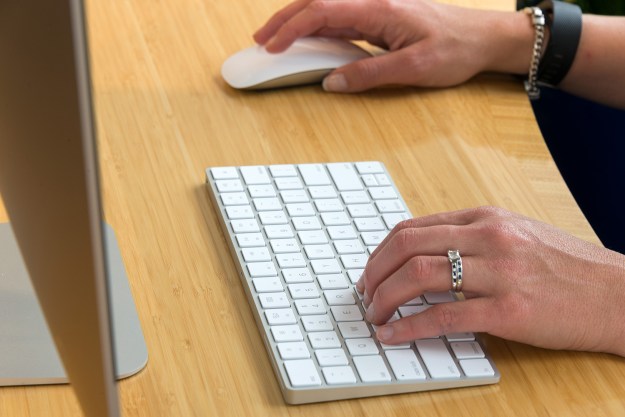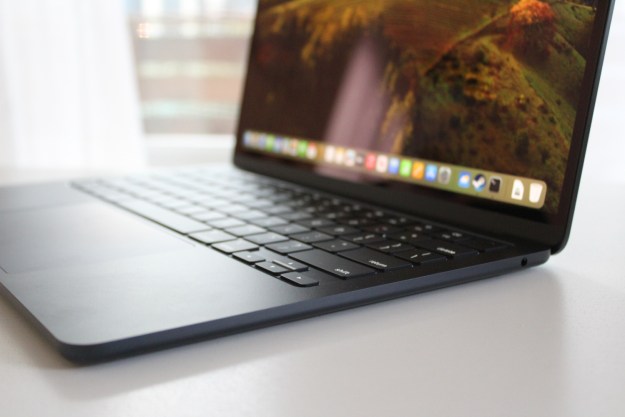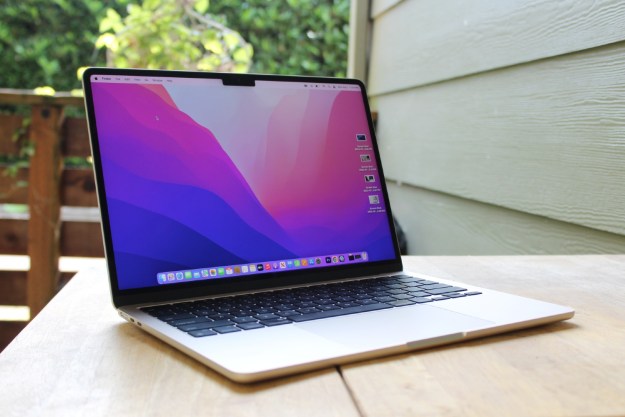While adding a membrane to keep out debris from damaging its third-generation keyboard design with butterfly switches on the 2018 MacBook Pro was a good first step in helping to address keyboard woes on Apple’s early MacBook and MacBook Pro models, recently published patent filings suggest that the Mac-maker may have grander plans to fix the keyboard. While one of Apple’s ideas calls for a redesigned membrane to keep debris out, Apple’s other keyboard inventions are based on a dual-screen laptop design.
Though Apple’s innovation with adding a secondary touchscreen isn’t entirely novel — Microsoft and Apple’s rivals in the PC spaces have been rumored to be working on dual-screen laptops — Apple is adding its own twist to this form factor. Like dual-screen concepts that were leaked in recent past, Apple would eschew the keyboard in favor of a secondary screen that could be made from glass or plastic.

The benefit here is that the keys could be reconfigured, and users can use their own custom key layouts with software. This could be useful for gaming, video editing, and other applications. Having a screen here and a software keyboard would eliminate some of weaknesses of a mechanical key design, including problems like debris getting trapped under the keys or damaged key switches. Users can also add dials, sliders, and other options to the software keyboard.
In essence, this keyboard would serve like an expanded version of the Touch Bar on the MacBook Pro, which already offers sliders, customizable keys, and keys that change depending on the application used. Moreover, Apple could also add haptic feedback to provide the illusion of mechanical key presses when typing, which could help mitigate some of the pain points — like fatigue and lack of responsiveness — when trying to type on a glass surface for extended duration.

For users who need a physical keyboard to type, Apple’s second innovation is to have a keyboard overlay covering the bottom display. The idea isn’t dissimilar to the snap-on keyboard cover accessory that Samsung sells for its Galaxy phones, essentially transforming the touchscreen-keyboard to a BlackBerry-like experience with physical keys. In Apple’s case, the surface surrounding the keyboard would also be touch-sensitive, and users could add place other peripherals, like a joystick, on this area.
And Apple’s last innovation calls for a flexible membrane that is waterproof to cover the keyboard mechanism. “The material would be flexible enough for the key mechanism to actuate the key, without requiring a hole to be made in the membrane at all,” AppleInsider noted. “The 2018 MacBook Pro models have an added membrane which seems to have been made with reducing debris buildup in mind, but its holes to allow for key actuation means it is not infallible.”
The design would be different from Apple’s keyboard cover for the iPad Pro, which has a flexible fabric membrane covering the top of the actual keyboard keys. The MacBook Pro’s membrane would cover just the key mechanism and would be placed between the mechanism and the keycaps.
Editors' Recommendations
- The XPS 16 is fighting an uphill battle against the MacBook Pro
- Apple already has its next big chip, but you may never see it
- MacBook Pro 16 vs. MacBook Pro 14: The important differences
- If you buy one MacBook Air alternative, make it this one
- The biggest threat to the MacBook this year might come from Apple itself


